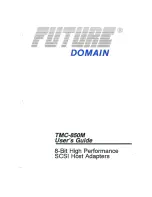
Manual VIPA System SLIO
Chapter 3 Deployment
HB300E - IM - RE_053-1CA00 - Rev. 11/29
3-3
CAN is based on a linear bus topology. You can use router nodes to
construct a network. The number of devices per network is only limited by
the performance of the bus driver modules.
The maximum distance covered by the network is determined by the
runtimes of the signals. This means that a data rate of 1Mbit/s limits the
network to 40m and 80kbit/s limits the network to 1000m.
The CAN bus communication medium employs a screened three-core
cable (optionally a five-core).
The CAN bus operates by means of differential voltages. For this reason it
is less sensitive to external interference than a pure voltage or current
based interface. The network must be configured as a serial bus, which is
terminated by a 120
Ω
terminating resistor.
Your VIPA CAN bus coupler contains a 9pin socket. You must use this
socket to connect the CAN bus coupler as a slave directly to your CAN bus
network.
All devices on the network use the same transfer rate.
Due to the bus structure of the network it is possible to connect or
disconnect any station without interruption to the system. It is therefore also
possible to commission a system in various stages. Extensions to the
system do not affect the operational stations. Defective stations or new
stations are recognized automatically.
Bus access methods are commonly divided into controlled (deterministic)
and uncontrolled (random) bus access systems.
CAN employs a Carrier-Sense Multiple Access (CSMA) method, i.e. all
stations have the same right to access the bus as long as the bus is not in
use (random bus access).
Data communications is message related and not station related. Every
message contains a unique identifier, which also defines the priority of the
message. At any instance only one station can occupy the bus for a
message.
CAN-Bus access control is performed by means of a collision-free, bit-
based arbitration algorithm. Collision-free means that the final winner of the
arbitration process does not have to repeat his message. The station with
the highest priority is selected automatically when more than one station
accesses the bus simultaneously. Any station that is has information to
send will delay the transmission if it detects that the bus is occupied.
Communication
medium
Bus access
method
















































